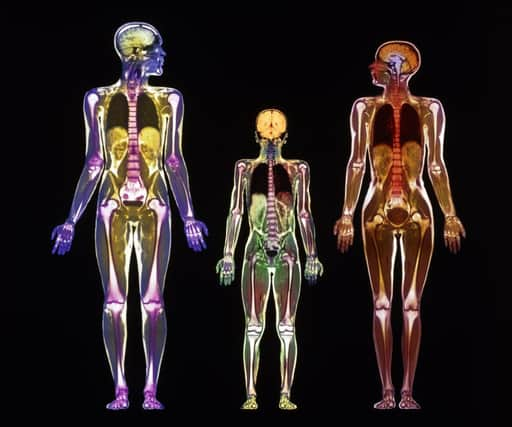Size does matter for Scotland’s future


HOW big must your business be to engage with China? The answer – not very. One of the companies I’m involved with – Well Cow – has developed a diagnostic tool that remotely monitors the health of cows. It’s a classic ‘one man and a dog’ type operation, but is generating significant interest from organisations in China who want to place orders.
This is good news, because small and medium-sized enterprises make up 99 per cent of Scotland’s economy. Many of them are already trading with China and other fast-growth economies like India. But more businesses need to grasp this opportunity – before it becomes an enormous threat.
Advertisement
Hide AdAdvertisement
Hide AdThis is particularly true in the world of science and technology, which depends on long-term funding to help solve some of the world’s most critical challenges in areas like health, energy, and security.
In 2014, China is forecast to spend around £170 billion on research and development. This dwarfs the UK’s equivalent £26bn spend. The sheer scale of China’s economy means it has vast funds at its disposal. While it may not have our academic credentials, China can basically afford to “buy” knowledge, and this is clearly going to be an issue for the UK in general, and Scotland in particular. How do we compete?
We certainly have quality, if not quantity, on our side. The Edinburgh Science Triangle, for example, is full of world-class technology that is attracting international attention. Our collaboration of seven science parks, four universities and two agritech institutes forms one of the top ten research and development locations in Europe – and is home to more than 3,000 researchers and 120 market-leading companies.
These include Roslin Cells, a world-leading supplier of clinical-grade stem cells; Cyberhawk, the world leader in industrial inspection and land surveying using remotely operated aerial vehicles (ROAVs); IndigoVision, the world-leading video security specialist and Edinburgh Pharmaceutical Processes, an expert in synthetic and analytical chemistry services worldwide.
It was also here that Sir Ian Wilmut created Dolly, the world’s first cloned mammal, in 1996. Before and since, our unrivalled legacy of innovation includes the hypodermic syringe (1853); insulin (1922); penicillin (1928); the Hepatitis B vaccine (1978); the MRI scanner (1980) and the world’s first bionic finger (2009).
Building on this legacy in the face of rapidly growing international competition requires a combination of factors – not least funding, imagination and boldness.
On the finance front, Scotland already receives a sizable chunk of research and development funding from both the UK and Europe. This is thanks in no small part to our phenomenal academic prowess. Edinburgh’s universities, for example, are global centres of excellence in disciplines including informatics, stem cell research, biotechnology and microelectronics. The University of Edinburgh in particular is one of the world’s leading research universities, ranked in the top six in Europe alongside Cambridge, Oxford and London.
Looking ahead, it is absolutely critical that this research funding is not jeopardised – whatever the outcome of Scotland’s referendum or the hue of the next UK government. Chancellor George Osborne’s recent announcement of a £450 million, five-year fund for research collaboration with emerging nations is a welcome step in the right direction, and the Scottish Government is doing much to foster links with China and boost the nation’s export credentials.
Advertisement
Hide AdAdvertisement
Hide AdOn imagination – this is part of our DNA in Scotland and needs to be applied to how we win and do business, as well as the products and services we sell. How do we get noticed and get into the right markets? This might involve collaborating with other businesses to attend trade shows, finding a distributor with the right connections or forming joint ventures with local partners.
Boldness is about being a little more ambitious. Americans may seem brash, but you can’t fault their ability to get things done, on a large scale. Britain’s quintessential reserve is particularly misplaced when it comes to raising money, for example.
Developing new treatments can take years and while small sums of money will get you by, they won’t take you to the next level.
Edinburgh-based NuCana, which is developing a range of anti-cancer medicines, recently showed us how to do it by raising $57m to fund further work on its lead product.
In the race to the top for science and technology, this proves that thinking big is essential – whatever the size of your business.
• Malcolm Bateman is chair of Edinburgh Science Triangle, www.edinburghsciencetriangle.com
SEE ALSO